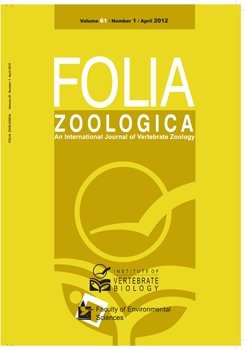An isolated population of the common hamster, forming the western border of the species range in Poland was analysed by the use of 16 microsatellite loci and the mtDNA control region in two consecutive generations. The genetic diversity and the effective population size in this population are low. We found the evidence for ancient bottleneck in this population, but the results of tests for recent reduction of Ne were ambiguous. However, population functions properly i.e. it is in HW equilibrium, Fis and relatedness coefficients do not indicate inbreeding. It indicates that even isolated and small populations of the common hamster have good chance of survival on the condition of the protection and restoration of the habitats. Moreover, the sexrelated differences in dispersal in the common hamster were demonstrated through the relatedness analysis.
How to translate text using browser tools
1 April 2012
Genetic variation and effective population size in an isolated population of the common hamster, Cricetus cricetus
Agata Banaszek,
Joanna ziomek

Folia Zoologica
Vol. 61 • No. 1
April 2012
Vol. 61 • No. 1
April 2012
endangered species
inbreeding
relatedness coefficients
sex-related gene flow




